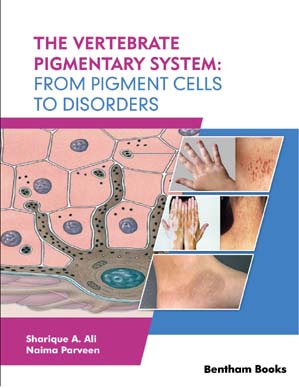Abstract
Background: Phytochemicals utilization in cosmetics is the current trend in the beauty and fashion industry. Most women prefer cosmetics derived from natural products over synthetic chemicals, as natural products are devoid of undesirable side effects. Skin protection is important not only from an aesthetic point of view but also for optimal health. Therefore, exploring the use of phytochemicals in cosmetic dermatology is essential.
Objective: In the current in vitro studies, we investigated the skin-protection properties of capsanthin 50%w/w crystals (CAP-50CR) and capsanthin 1.5% w/w soft extract (CAP-1.5SE) obtained from red bell pepper fruits, out of which, one is an industrial by-product effective for sunburn, melanin inhibition, tyrosinase inhibition, anti-fungal activity, and gene expression of Aquaporin 3 (AQP-3) in the human keratinocyte cell line.
Methods: Two extracts were obtained by solvent extraction, supercritical extract purification, and saponification, and were characterized and examined for their dermatological activities.
Results: Capsanthin 50%w/w crystals (CAP-50CR) showed a sun protection factor (SPF) value of 34.44, whereas capsanthin 1.5% w/w soft extract (CAP-1.5SE) showed a value of 20.63. Minimal inhibitory concentration (MIC) of CAP-50CR against Malassezia furfur was 0.625 mg/mL and 5mg/mL for CAP-1.5 SE. Both CAP-50CR and CAP-1.5SE showed the same MIC values against Candida albicans, which is 2.5 mg/mL. In the MTT assay on mouse skin melanoma cells (B16F10), the test substance CAP-50CR showed a CTC50 value of 98.44±2.55 μg/mL, whereas the test substance CAP-1.5SE exhibited a CTC50 value greater than 1000 μg/mL. Further, the nontoxic concentrations of the test items were evaluated for forskolin-induced melanin inhibition activity. For CAP-50CR, the non-toxic concentration of 7 and 3 μg/mL showed melanin inhibition of 48.73 ± 0.75% and 42.29 ± 5.2%, respectively, and for CAP-1.5SE, the melanin inhibition was found to be 55.84%±1.47 and 46.44%±1.05, respectively, for the non-toxic concentrations of 50 and 25μg/mL. The CAP-50CR extract showed 43.78% and 39.37% tyrosinase inhibition at the tested concentrations of 7 and 3 μg/mL, respectively. Similarly, CAP-1.5SE showed tyrosinase inhibitions at 34.6% and 22.9% for the concentrations of 50 and 25 μg/mL, respectively. The test substances CAP-50CR and CAP-1.5SE exhibited a CTC50 value of 76.59±3.25 μg/mL and 664.95 ± 2.88 μg/mL on the HaCaT cells. In the gene expression study, both the test substances showed an increase in the levels of AQP-3 mRNAs at lower and higher concentrations as compared to the control in the semi-quantitative RT-PCR procedure.
Conclusion: CAP-50CR and CAP-1.5SE exhibited skin protection from UV radiation and hyperpigmentation. They also exhibited anti-fungal, skin brightening, anti-wrinkle, and moisturizing properties. These results suggest that capsanthin from red bell pepper fruits can be employed as a cosmetically active ingredient in skin guard formulations and as a potential therapeutic agent for a variety of dermatological disorders. This study provides a new ground for investigating the potential of capsanthin in the management of skin protection.
Keywords: Capsanthin, cosmetic dermatology, gene expression, skin brightening, anti-wrinkle, anti-fungal activity.
[http://dx.doi.org/10.1093/hmg/ddp003] [PMID: 19297406]
[http://dx.doi.org/10.3390/cosmetics2020048]
[PMID: 20626172]
[http://dx.doi.org/10.1111/j.1600-0749.1994.tb00054.x] [PMID: 7855068]
[http://dx.doi.org/10.1016/j.clindermatol.2004.09.013] [PMID: 15708290]
[http://dx.doi.org/10.1002/biof.29] [PMID: 19449448]
[http://dx.doi.org/10.1111/j.1468-2494.2008.00463.x] [PMID: 18822041]
[http://dx.doi.org/10.3390/ijms12084819] [PMID: 21954327]
[http://dx.doi.org/10.1016/j.jep.2006.01.010]
[http://dx.doi.org/10.1248/bpb.28.838] [PMID: 15863889]
[http://dx.doi.org/10.1128/JCM.00597-10] [PMID: 20702672]
[http://dx.doi.org/10.1111/ijd.13116] [PMID: 26710919]
[http://dx.doi.org/10.1371/journal.pone.0225796] [PMID: 31851674]
[http://dx.doi.org/10.1080/13693780701218689] [PMID: 17510856]
[http://dx.doi.org/10.3109/1040841X.2013.813904] [PMID: 23962107]
[http://dx.doi.org/10.1111/j.1473-2165.2011.00600.x] [PMID: 22360335]
[http://dx.doi.org/10.1007/s11418-019-01364-x] [PMID: 31588965]
[http://dx.doi.org/10.1016/j.abb.2010.07.004]
[http://dx.doi.org/10.1016/S1043-4526(07)00005-8] [PMID: 18291307]
[http://dx.doi.org/10.1159/000101807] [PMID: 17446716]
[http://dx.doi.org/10.1111/jfbc.13776] [PMID: 34056744]
[http://dx.doi.org/10.1111/j.1751-1097.1979.tb07090.x] [PMID: 441130]
[http://dx.doi.org/10.1016/0022-1759(86)90368-6] [PMID: 3486233]
[http://dx.doi.org/10.1016/j.apsb.2013.12.008] [PMID: 26579376]
[http://dx.doi.org/10.1167/iovs.07-1053] [PMID: 18385064]
[http://dx.doi.org/10.2741/afaq] [PMID: 11897547]
[http://dx.doi.org/10.1177/1091581810385956] [PMID: 21164073]
[http://dx.doi.org/10.1111/j.1473-2165.2006.00253.x] [PMID: 17177740]
[http://dx.doi.org/10.1055/s-2008-1081296] [PMID: 18696411]
[http://dx.doi.org/10.1111/j.1751-1097.2007.00253.x] [PMID: 18086246]
[http://dx.doi.org/10.1002/mnfr.201100232] [PMID: 21953695]
[http://dx.doi.org/10.1111/j.1753-4887.2009.00264.x] [PMID: 20137053]
[http://dx.doi.org/10.1146/annurev.nutr.24.012003.132320] [PMID: 15189118]
[http://dx.doi.org/10.1208/s12249-021-02065-z] [PMID: 34244867]
[http://dx.doi.org/10.4103/1947-2714.112473] [PMID: 23814761]
[http://dx.doi.org/10.1113/jphysiol.2002.020818] [PMID: 12096044]
[http://dx.doi.org/10.1046/j.1523-1747.2002.01710.x] [PMID: 11918716]
[http://dx.doi.org/10.1074/jbc.M105411200] [PMID: 11751877]
[http://dx.doi.org/10.1016/S0167-4781(01)00320-7] [PMID: 11750058]

















